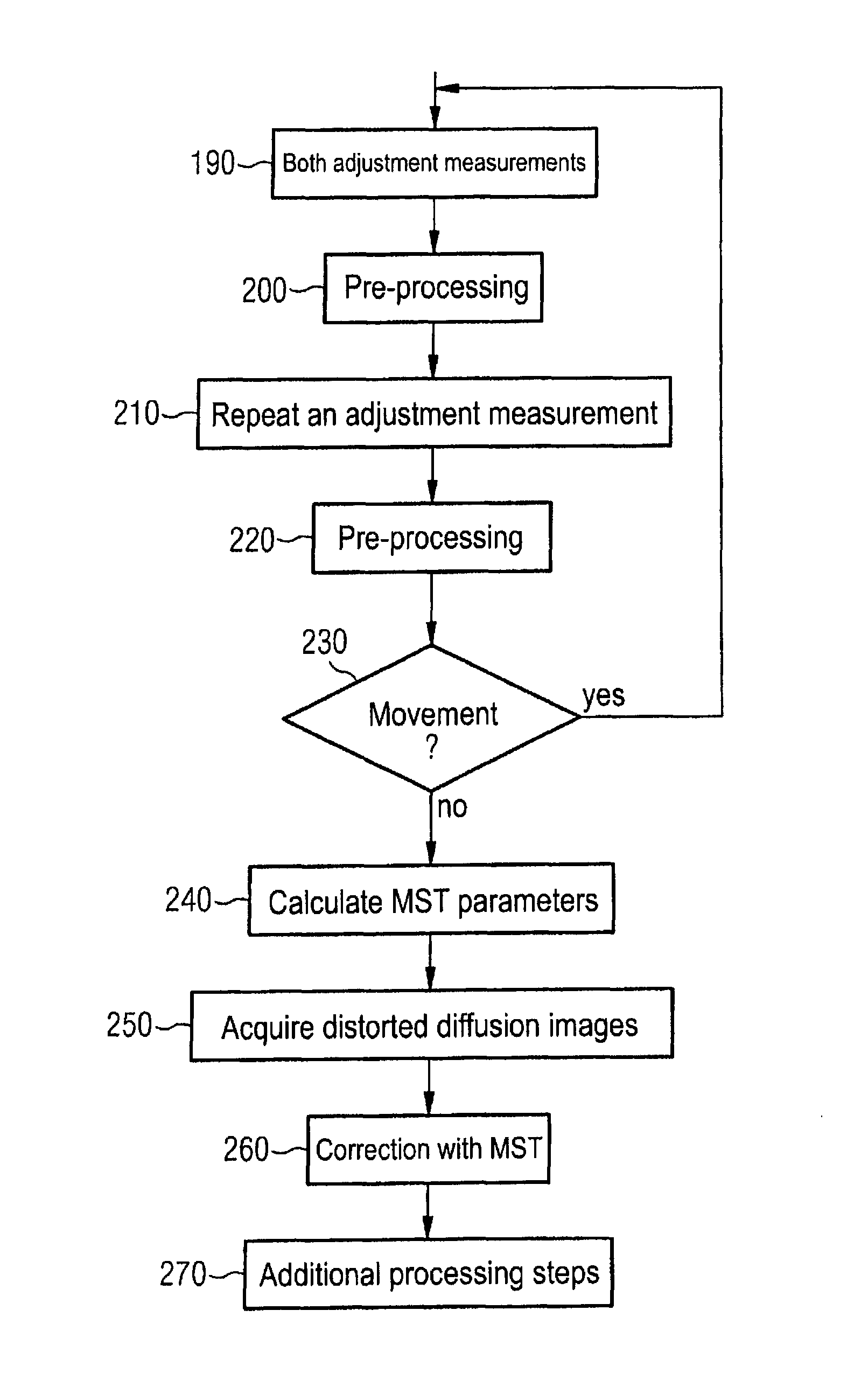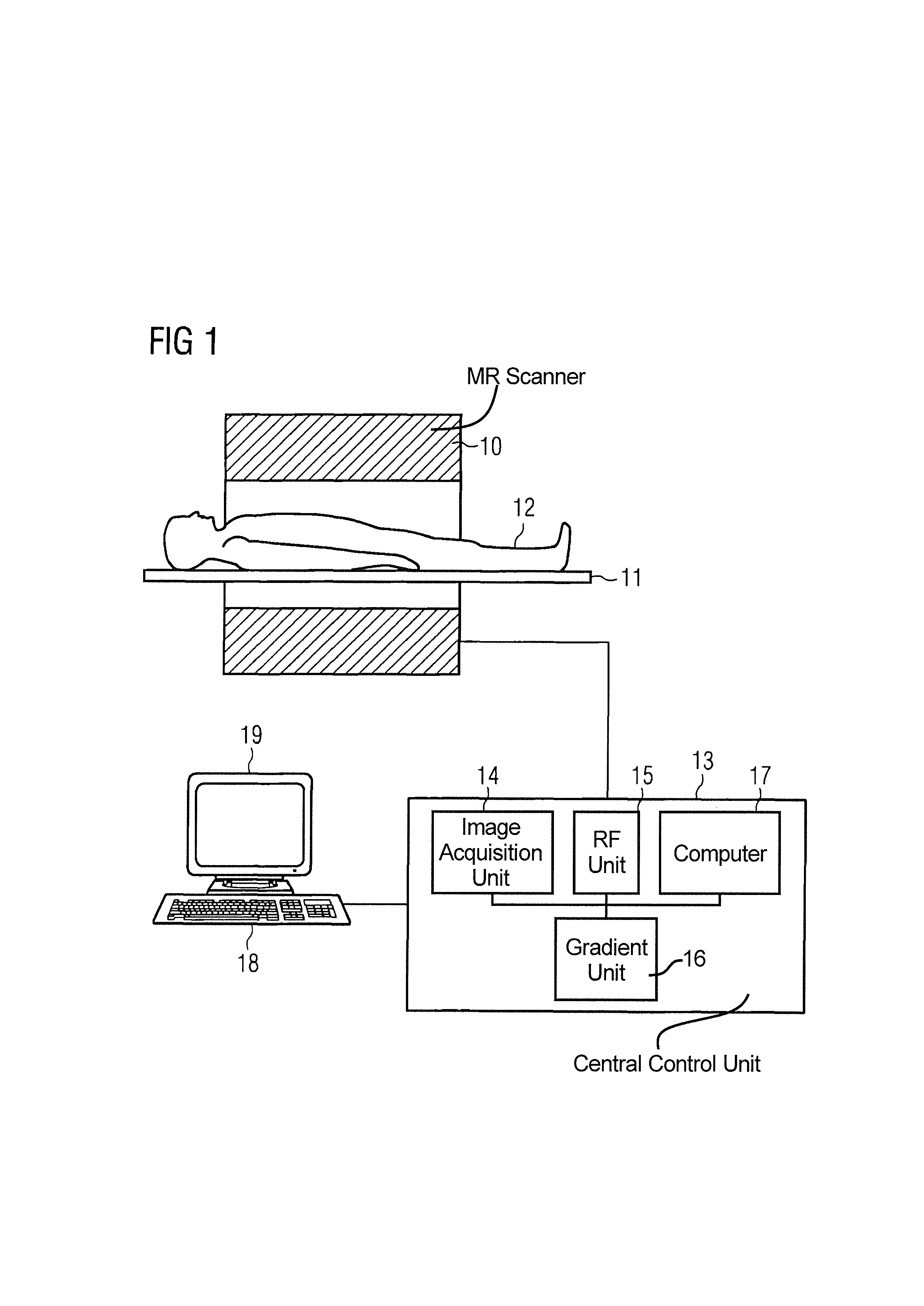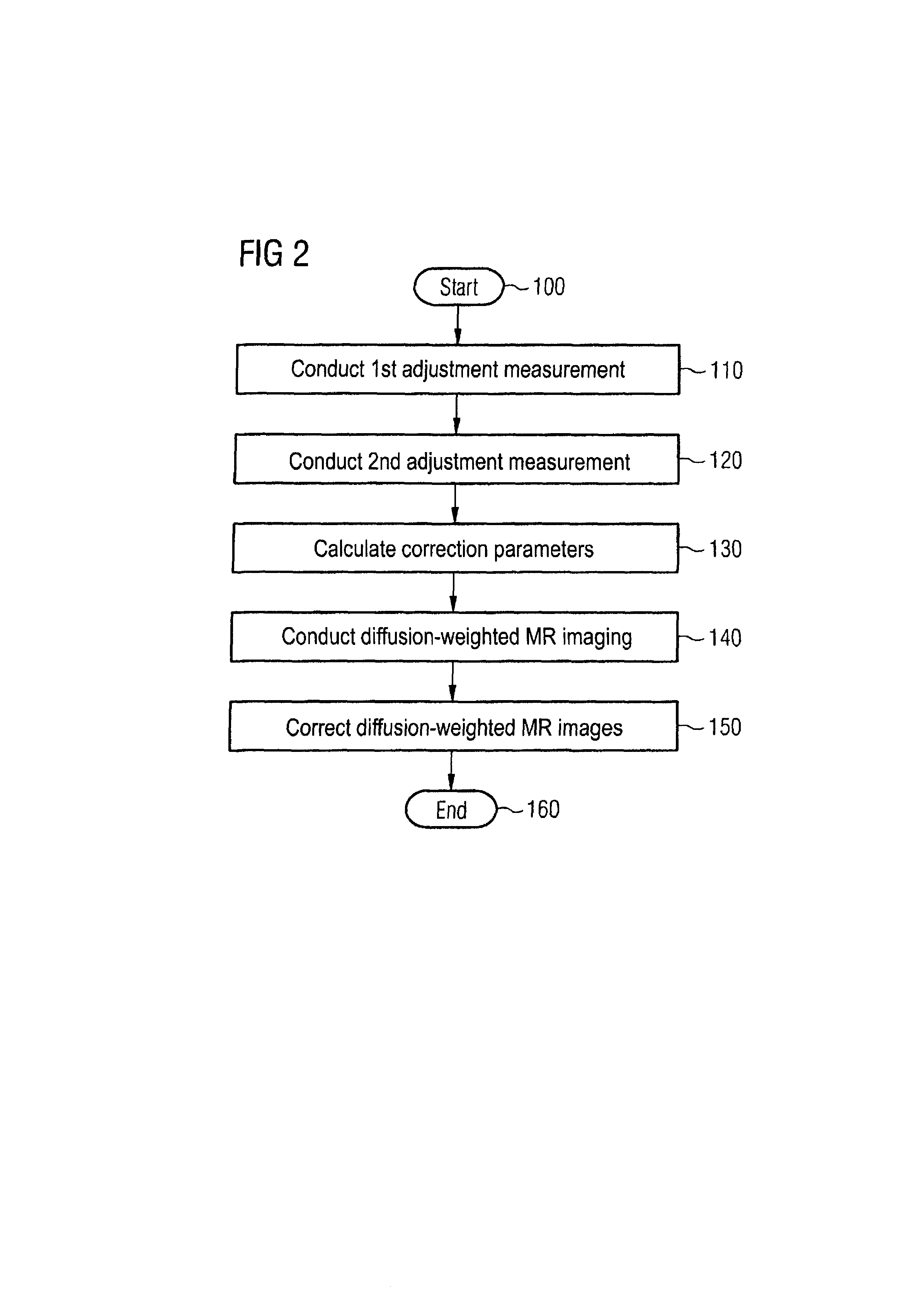Magnetic resonance method and apparatus to reduce distortions in diffusion imaging
a diffusion imaging and magnetic resonance technology, applied in the field of image distortion correction, can solve the problems of image distortion whose appearance, incorrect association of pixel information, errors or at least a reduced precision of calculated parameters, etc., and achieve the effect of improving the correction method of image distortion
- Summary
- Abstract
- Description
- Claims
- Application Information
AI Technical Summary
Benefits of technology
Problems solved by technology
Method used
Image
Examples
Embodiment Construction
[0024]In FIG. 1 an MR system is shown with which diffusion-weighted MR images can be acquired with the aid of the echoplanar technique and with which distortions in the diffusion images that are due to eddy currents can be reduced. The MR system has a scanner 10 with a basic field magnet into which an examination subject 12 on a bed 11 is moved in order to acquire MR images of the examination subject 12 in the center of the scanner 10. The MR system furthermore has a central control unit 13 that is used to control the MR scanner 10. The central control unit 13 has an image acquisition unit 14 for pulse sequence control in which the sequence of the RF pulses and the sequence of the gradient switches are controlled depending on the selected imaging sequence. The generation of MR images by radiation of RF pulses and the generation of gradient fields is known to those skilled in the art and need not be explained in detail herein. The central control unit 13 furthermore has an RF unit 15...
PUM
 Login to View More
Login to View More Abstract
Description
Claims
Application Information
 Login to View More
Login to View More - R&D
- Intellectual Property
- Life Sciences
- Materials
- Tech Scout
- Unparalleled Data Quality
- Higher Quality Content
- 60% Fewer Hallucinations
Browse by: Latest US Patents, China's latest patents, Technical Efficacy Thesaurus, Application Domain, Technology Topic, Popular Technical Reports.
© 2025 PatSnap. All rights reserved.Legal|Privacy policy|Modern Slavery Act Transparency Statement|Sitemap|About US| Contact US: help@patsnap.com



